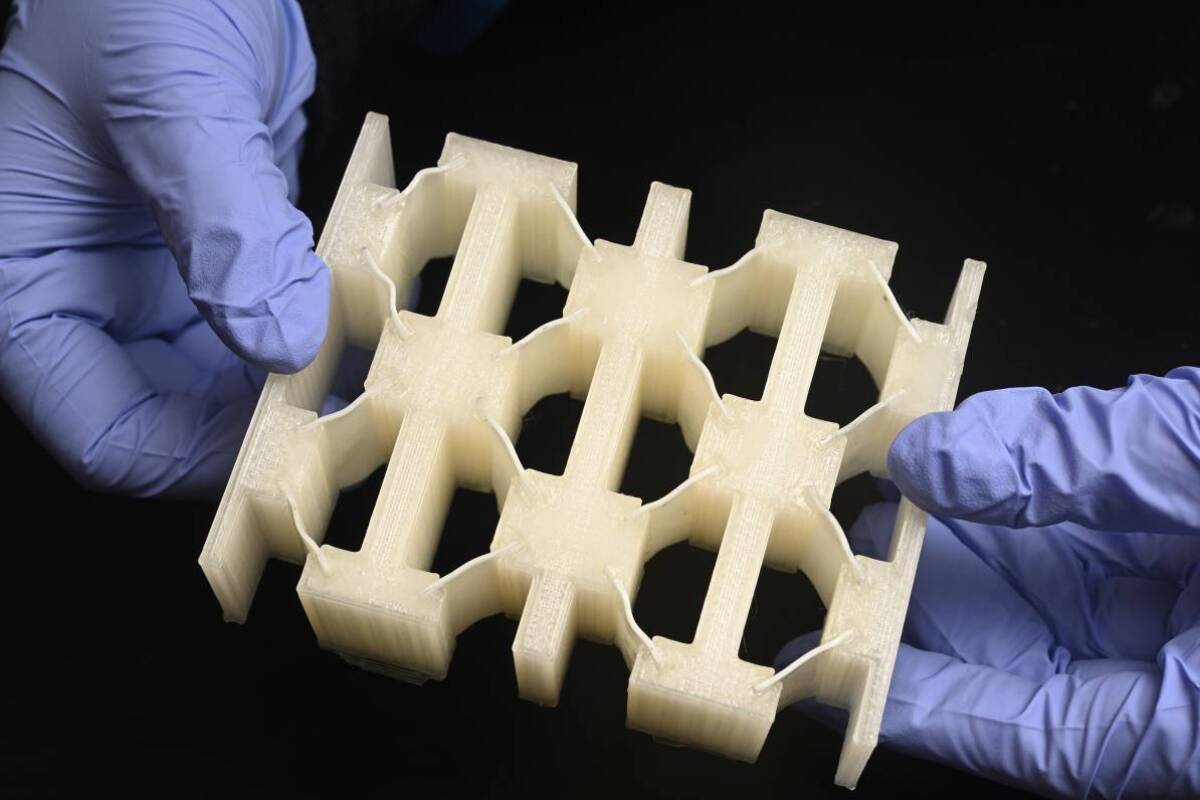
This is a major breakthrough provided it can be produced easily enough to not be extremely priced.
Certainly head protection leaps to mind. since it is so light, actual helmet thickness can be certainly be significant. understand that the russians produce a helmet made from 3 mm of titanium. Still limited i am sure.
There is an energy trtade off here because the helmet is protecting a mobile head and somewhere an impact is simply too large and we have diminishing returns. Still we are looking at excellent shrapnel protection as that titanium helmet would provide.
New shock-absorbing material as strong as metal but light as foam
March 10, 2022
https://newatlas.com/materials/liquid-crystal-elastomer-impact-energy-absorb/?
A new material made of liquid crystal elastomers can absorb energy from impacts effectively
Will Kirk/Johns Hopkins University
Researchers at Johns Hopkins University have developed a new shock-absorbing material that is super lightweight, yet offers the protection of metal. The stuff could make for helmets, armor and vehicle parts that are lighter, stronger and, importantly, reusable.
The key to the new material is what are known as liquid crystal elastomers (LCEs). These are networks of elastic polymers in a liquid crystalline phase that give them a useful combination of elasticity and stability. LCEs are normally used to make actuators and artificial muscles for robotics, but for the new study the researchers investigated the material’s ability to absorb energy.
The team created materials that consisted of tilted beams of LCE, sandwiched between stiff supporting structures. This basic unit was repeated over the material in multiple layers, so that they would buckle at different rates on impact, dissipating the energy effectively.
In a series of experiments, the team tested how well the material could withstand impacts of different masses at different speeds. The materials were struck by objects weighing between 4 and 15 lb (1.8 and 6.8 kg) at speeds of up to 22 mph (35.4 km/h) and, sure enough, they held up.
Perhaps unsurprisingly, the material performed better with more layers of the cells. A structure with four layers, for example, had almost double the energy absorption density of a single-layer structure.
Liquid crystal elastomer materials in various shapes
Will Kirk/Johns Hopkins University
https://newatlas.com/materials/liquid-crystal-elastomer-impact-energy-absorb/?
While the materials were so far only tested with impacts up to 22 mph, the team says that they should be able to absorb impacts at higher speeds as well.
The researchers say that the material could be used to improve the safety of helmets, body armor, car bumpers and other parts of vehicles and aircraft, effectively dissipating energy from impacts while remaining lightweight.
"We are excited about our findings on the extreme energy absorption capability of the new material," said senior author Sung Hoon Kang, an assistant professor of mechanical engineering. "The material offers more protection from a wide range of impacts, but being lighter could reduce fuel consumption and the environmental impact of vehicles while being more comfortable for protective gear wearers."
The first use case will be helmets, as the team is currently working with a company to design and test this kind of protective gear for athletes and the military.
The research was published in the journal Advanced Materials.
Source: Johns Hopkins University

No comments:
Post a Comment